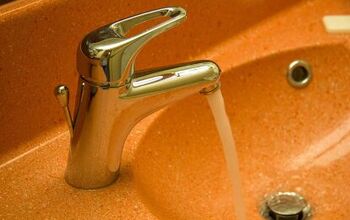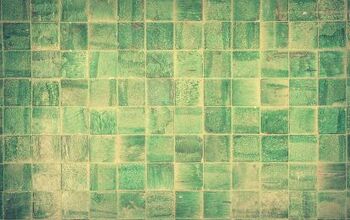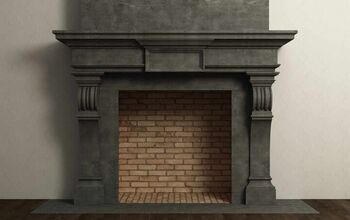How To Remove A Tub Surround With Adhesive (Step-by-Step Guide)

Thinking of getting rid of that old tub and installing a walk-in shower? Or maybe you just want a new surround for your tub. Whatever the reason you are wanting to remove your tub surround, you will need to be prepared to remove the adhesive as well, which can be a tough job. So, plan to spend at least two hours on this project.
Basically, you will be removing all the handles and faucets first before removing the tub spout, shower head, and drains. Moving onto the tub surround, you will need a utility knife to cut away the adhesive as you pull the surround free. If you would rather cut into the drywall to take it out that way, you will need a Sawzall.
Do You Need Kitchen and Bath Repair Services?
Get free, zero-commitment quotes from pro contractors near you.

Taking it Off or Cutting it Out
Depending on what you plan on doing with your shower and tub space, you can decide whether you want to cut the tub surround out or remove it by scoring the glue and pulling it off. If you are just replacing the tub surround, it is best to remove the adhesive and pull the surround off gently, so you do not damage the walls.
One reason you may want to remove the drywall with the surround is to keep from damaging it. Some surrounds have a flange or lip that is tucked under the drywall. Trying to remove this kind of surround without cutting the drywall will not only be extremely difficult, but it will also do some major damage to the surrounding drywall as well.
How To Remove a Tub Surround with Adhesive Using Vinegar
From cooking to cleaning, vinegar is an all-purpose solution for many things. It can even help you get that tub surround off by dissolving the glue holding it to the wall. Just follow these steps.
- Turn off the water to the tub.
- Remove the shower and tub handles and faucets. You will need a Phillips head screwdriver to remove the screws and a flathead screwdriver to pry the handles and knobs off the fittings.
- Take off the tub spout by removing the cap on the spout to find the set screw. Use a Phillips head screwdriver to remove the spout. If there is no screw, you will just need to unscrew the spout by turning it counterclockwise.
- Remove the wallboard trim and cut the sealant with your putty knife or flat razor.
- Mix one cup of white vinegar with two cups of hot water in a spray bottle.
- Spray the area with the mix and let it soak for a few minutes.
- Use a prybar to pull the tub surround loose from the wall, using more spray as needed.
How To Remove a Tub Surround with Adhesive Using Alcohol
Rubbing alcohol is not just for sanitizing cuts. You can use it to loosen the adhesive that is holding your tub surround to the wall. These steps explain how to do it.
- Always turn off the water before starting any plumbing work.
- Use a Phillips head screwdriver to remove the screws from the handles and faucets. You will also need a flathead screwdriver to pry them off their fittings.
- Remove the cap on the tub spout and use a screwdriver to unscrew and remove it. Some spouts are just removed by unscrewing them rather than removing a screw.
- Use a flat razor or putty knife to remove the wallboard trim by cutting the sealant.
- Put on gloves to protect your hands from the alcohol, which can irritate your skin.
- Mix one cup of rubbing alcohol with one cup of hot water in a spray bottle.
- Spray the glued spots and let it soak for a few minutes.
- Pry the tub surround loose from the wall with a prybar, using more alcohol as needed.
How To Remove a Tub Surround with Adhesive Using WD-40
We have found that WD-40 is good for all sorts of things from removing stains to loosening screws. Follow these steps to see if it helps you remove your tub surround easier.
- Be sure to turn off the water before beginning the removal.
- Take off the faucets and handles next. Use a Phillips head screwdriver to remove the screws and then use a flathead to pull the knobs and handles off their fittings.
- Remove the tub spout by prying off the cap and using a Phillips head screwdriver to take off the spout. For those without a screw, just turn in to the left to unscrew it.
- If there is trim, remove it by cutting the seal between the wall and the trim with a razor or putty knife.
- Wearing gloves to protect your hands, spray the area with the WD-40 and let it soak for a few minutes.
- Using a prybar, pull the tub surround loose from the wall, using more spray as needed.
How To Remove a Tub Surround with Adhesive Using Heat
It is also possible to use a heat gun to soften the adhesive enough to allow you to pry the surround off without damaging anything. You may need to use a crowbar or long steel bar to slide behind the surround and twist it to pry it loose. Just follow these steps.
- Turn off the water to the tub.
- Remove the faucet, handles, and showerhead. You should need a Phillips head screwdriver to remove the screws. You can use a flathead screwdriver to pry the head, handles, and faucet off their fittings.
- Remove the tub spout by taking off the cap to expose the set screw and using a Phillips screwdriver to release it from its fitting.
- Some spouts just need to be unscrewed by turning it counterclockwise.
- Release the seal between the trim and wall by cutting it with a razor or putty knife.
- Use a heat gun to soften the glue behind the tub surround.
- Gently pull off the surround, reheating as needed.
How To Remove a Tub Surround with Adhesive by Cutting it Out
- Be sure to turn off the water before beginning.
- Take off all the handles and the showerhead. Use a Phillips head screwdriver to take off the screws and a flathead screwdriver to pull them off their fittings.
- Take the cap off the tub spout and use a Phillips head screwdriver to remove the screw. Those without a screw should just come off by unscrewing the whole spout.
- If you have trim, cut the seal with a putty knife or razor.
- Put on work gloves, a mask, and eye protection.
- Using a Sawzall, cut around the outside of the tub surround from the front left side to the bottom right side.
- Keep the saw at an angle to make sure you do not cut into any plumbing that is behind the surround.
- Once you have the pieces cut, pull the surround loose from the wall.
Do You Need Kitchen and Bath Repair Services?
Get free, zero-commitment quotes from pro contractors near you.

Related Questions
What if my tub surround is made of tile?
Even if your tub surround is made of tile, you can still get it out of there if you want to. It may take more time and you may need some good heavy tools. However, you can remove the tiles in one day so you can refinish the space as you like. Just follow these directions.
- Turn the water off.
- Protect your skin, eyes, and lungs by wearing long sleeves, long pants, gloves, goggles, and a mask.
- Spread out a drop cloth over the tub, floor, and fixtures.
- Use a hammer and chisel to remove the rounded tiles from the top of the tub surround.
- Cut through your drywall along the edges with a Sawzall.
- Using a prybar, tear away the largest pieces of the drywall. You may have to move it back and forth to loosen the nails.
- After you get the side walls removed, take out the back wall by breaking the tiles in a vertical line with the hammer and chisel.
- Pry up the exposed edges of the back wall surround.
Since many of the floor tiles are heavier, they may need some extra adhesive to make sure they stay where you put them. Some tiles also absorb water, which can make them heavier. But you can certainly use them on the walls if that is what you want to do.
Never use wall tiles on the floor though. Floor tiles are made especially for floors because they have to pass stringent rules on skid resistance, slip resistance, and water absorption. They also have to be rated for inclines and declines. It is best to use floor tiles on the floor and wall tiles on the walls.

I am a DIYer who loves writing about anything home-related. When I am not writing, you can find me studying for my PhD in Psychology, photographing nature, and swimming at the lake with my grandkids.
More by Patricia Oelze



















![How To Reset A Whirlpool Cabrio Washer [In 5 Easy Steps!]](https://cdn-fastly.upgradedhome.com/media/2023/07/31/9076531/how-to-reset-a-whirlpool-cabrio-washer-in-5-easy-steps.jpg?size=350x220)







